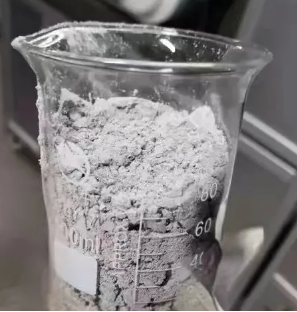What are the hazards of fly ash produced by waste incineration?
How to deal with it?
Hazards of fly ash from waste incineration
Fly ash is the bottom ash collected by the flue gas purification system of waste incineration facilities and settled at the bottom of flues and chimneys. According to the National List of Hazardous Wastes, domestic waste is classified as hazardous and the hazardous waste code is HW18 (772-002-18).
Hazards of fly ash: The inorganic and organic pollutants contained in fly ash pose a serious threat to the environment and biological health.
The heavy metal elements contained in fly ash, such as lead (Pb), chromium (Cr), mercury (Hg), arsenic (As) and cadmium (Cd), are the five main heavy metals known to pose a significant risk to human health. These metals are difficult to decompose in water bodies and can interact with other toxins to form more toxic organic compounds.
Once fly ash is discharged into the environment, it will cause significant pollution and damage to water quality, air and soil, and thus have a profound negative impact on ecosystems and organisms.

Can fly ash be directly disposed of in a municipal solid waste landfill?
📌The "List of Hazardous Waste Exemption Management" mentions that when fly ash from the incineration of domestic waste meets the requirements of the "Pollution Control Standards for Domestic Waste Landfills" and enters the domestic waste landfill for landfilling, the landfill disposal process is not managed as hazardous waste.
📌The "Pollution Control Standards for Domestic Waste Landfills" clearly defines the management requirements for the entry of fly ash from the incineration of domestic waste into the landfill, including that the dioxin content is less than 3 μg TEQ/kg, and the concentration of hazardous components in the leachate prepared in accordance with HJ/T 300 is lower than the limit specified in Table 1.
⭕From the above documents, we can know that fly ash can be landfilled in the landfill after pretreatment to meet the requirements.
Can fly ash be "reused"?
❌The document "Reply on Issues Concerning the Disposal of Fly Ash from Urban Domestic Waste Incineration" clearly states that in the absence of relevant comprehensive utilization standards, fly ash shall not be comprehensively utilized by sending it to building materials companies to add cement, river sand to make standard bricks, etc. This means that the treatment and utilization of fly ash must follow strict environmental protection standards and regulations to prevent secondary pollution to the environment.
✔️It can be comprehensively utilized by using cement kiln co-disposal and other methods in accordance with the "Pollution Control Standards for Co-disposal of Solid Waste in Cement Kilns".
What are the methods for handling fly ash?
1️⃣ Low temperature thermal decomposition: The process of treating fly ash at a temperature below 500°C under oxygen-deficient or oxygen-free conditions to dechlorinate and detoxify dioxin-like substances. The advantage of this method is that it can destroy harmful substances at a lower temperature and reduce energy consumption.
2️⃣ High temperature sintering: By mixing fly ash with other siliceous and aluminous components and flux, partially melting it at high temperature, and then cooling it to form a sintered body. This method can reduce the volume of fly ash and solidify the harmful substances in it.
3️⃣ High temperature melting: Similar to sintering, but at a higher temperature, the fly ash is completely melted and a dense glass is formed by rapid cooling. This method can produce a stable glassy substance and effectively solidify the harmful substances in the fly ash.
4️⃣ Solidification and stabilization technology: These technologies are designed to make the polluting components in hazardous waste chemically inert or contained for easy disposal, utilization or transportation. • (1) Asphalt solidification technology: Taking advantage of the chemical stability and adhesion of asphalt, asphalt is mixed with fly ash, and the harmful substances are uniformly attached to the asphalt through saponification reaction to form a solidified body. This method can be carried out at high temperature or room temperature. • (2) Cement solidification technology: By mixing fly ash with cement to produce a solid body, the harmful components in the hazardous waste are blocked. This method requires the selection of appropriate additives based on the nature of the hazardous waste and product quality requirements. • (3) Chemical agent stabilization technology: Through chemical reactions, the toxicity level of toxic and harmful substances is reduced and converted into substances with low toxicity and low solubility. This method is mainly used in the treatment of heavy metal waste.
5️⃣ Water washing and desalination pretreatment (FWD) + cement kiln co-treatment technology: The countercurrent rinsing technology is used to remove soluble substances in fly ash to achieve the purpose of secondary utilization or detoxification. The fly ash treated by FWD technology has an extremely high chlorine removal rate and a low water content, which is conducive to resource utilization.




